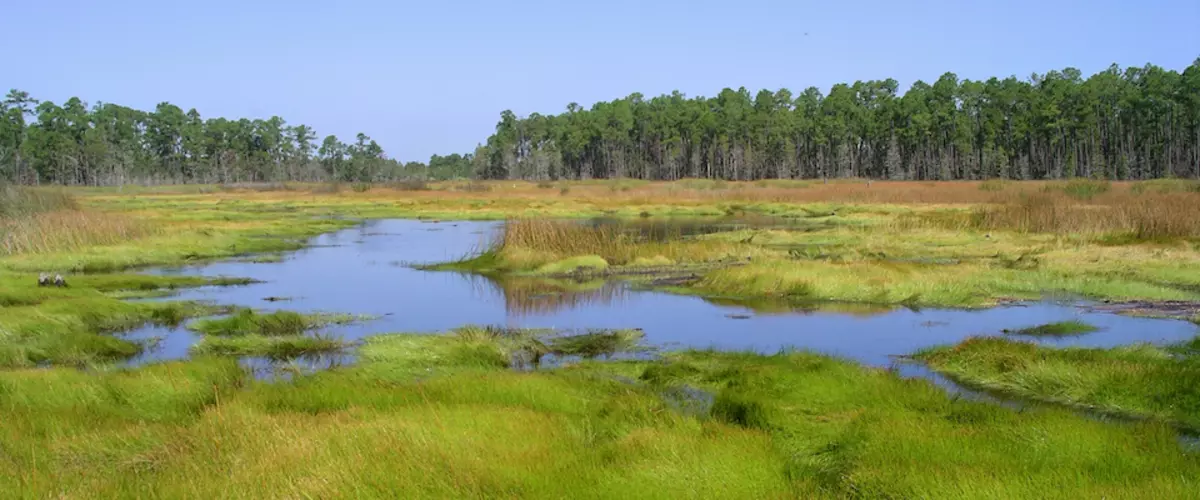The Freshwater MEL
MEL Activities
There are two forms of this MEL freshwater activity....a pre-constructed (pcMEL) and a build-a-MEL (baMEL). The pcMEL limits student choices, which may be good for the first time the activity is introduced to a class or if you are working at earlier grade levels. The baMEL allows more choices, which may be good for students who have used the MEL before or are at an advanced grade level. Below the activity links are additional teaching resources that will help students develop an understanding of the spatial complexity of access to freshwater resources.
Overview
This article provides an introduction to the Freshwater build-a-MEL (baMEL). It is useful even if you are using the Freshwater pcMEL with your students. The primary difference between the pcMEL and the baMEL is that with the pcMEL students are given two models and four lines of evidence in a preconstructed diagram where as with the baMEL students choose two models from three and select four lines of evidence from eight to create their own MEL diagram.
Freshwater Resources: The Challenges of Quantity and Quality (Acrobat (PDF) 529kB Feb8 21)Next Generation Science Standards Performance Expectations
MS-ESS2-4: Earth's Systems
- Develop a model to describe the cycling of water through Earth's systems driven by energy from the sun and the force of gravity.
MS-ESS3-1: Earth and Human Activity
- Construct a scientific explanation based on evidence for how the uneven distributions of Earth's mineral, energy, and groundwater resources are the result of past and current geoscience processes.
MS-ESS3-3: Earth and Human Activity
- Apply scientific principles to design a method for monitoring and minimizing a human impact on the environment.
HS-ESS3-2: Earth's Systems
- Analyze geoscience data to make the claim that one change to Earth's surface can create feedbacks that cause changes to other Earth systems.
HS-ESS3-1: Earth and Human Activity
- Construct an explanation based on evidence for how the availability of natural resources, occurrence of natural hazards, and changes in climate have influenced human activity.
Lateral Reading (LR) Resources
What does it mean for a source to be credible? Why should we investigate whether a source is credible before we read it? How do we decide whether online sources are credible? Use lateral reading to find out.
Use lateral reading to evaluate the credibility of three sources related to freshwater.
These LR sources connect to Evidence #3: Water reclamation and desalination costs are expensive. These costs vary depending on location.
Use the LR Guiding Questions to evaluate the credibility of each source separately.
- LR Guiding Questions (Acrobat (PDF) 28kB Jun8 23)
- Source A: Desalination and Energy Use... Should We Pass the Salt?
- Source B: Desalination Source article not available
- Source C: Desalination and Water reuse is the future of sustainable water management Source article not available
Other Resources
This Plausibility Ranking Task (PRT), which may be completed prior to using any MELs, helps students to understand the role of evidence in supporting or refuting models.
- Plausibility Ranking Task (Acrobat (PDF) 76kB May6 24)
Virtual MEL
*NOTE: The virtual materials below are from an older version of the activity than what is posted above.
The Google Drive folder below contains MEL resource documents in the Google formats. In order to maximize the flexibility of our activities, the MEL Project Team wanted to make more resources compatible with virtual settings. We have made our MEL scaffolds available in Google formats, so that they can be copied, modified, and uploaded more easily on a variety of platforms and devices. Please note that to access all the materials for each MEL scaffold, you will need a Google account. View the README file first.
- README First Instructions & FAQ (Acrobat (PDF) 70kB May24 21)
- Virtual Freshwater MEL Resource Documents in Google Drive
Digital Resources
Passage of Water is a three-part interactive experience created in collaboration with artist, Yiyun Kang, NASA and Google. Learn about freshwater availability and engage with possible solutions to avoid a water crisis.
Freshwater Education Resources from NOAA contains lessons and activities related to the water cycle, watersheds, flooding, and pollution plus the Great Lakes ecosystem, which is the largest supply of freshwater in the world.
EPA's Climate Change Impacts on Freshwater Resources describes three key impacts from climate change, the role of freshwater in the U.S. economy and the inequitable distribution of freshwater resources, particularlly with regard to indigenous and low-income communities.
Water Science School from the USGS offers information on many aspects of water, along with pictures, data, maps, and teaching resources for water education. It includes a unique global water cycle diagram that includes how human water use affects where water is stored, how it moves, and how clean it is.
Will there be enough fresh water? is a module from The Concord Consortium's High Adventure Science series. Explore the distribution and uses of fresh water on Earth. Use models of porosity and permeability, run experiments with computational models, and hear from a hydrologist working on the same question. Funded by National Science Foundation under Grant No. DRL-0929774 and DRL-1220756.


![[reuse info]](/images/information_16.png)





